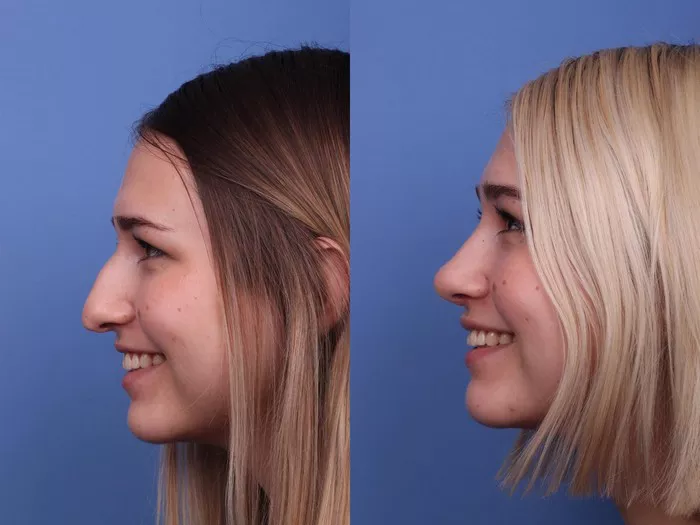Rhinoplasty is a surgical procedure that involves reshaping the nose for cosmetic or functional purposes. While it is generally a safe and effective procedure, it is important to understand the recovery process and potential complications. One common concern after rhinoplasty is nosebleeds. In this article, we will explore how long nosebleeds can last after rhinoplasty and what to expect during the recovery process.
Understanding Rhinoplasty
Rhinoplasty is a surgical procedure that is typically performed under general anesthesia. During the procedure, the surgeon will make incisions to access the bones and cartilage of the nose. They will then reshape the nose to achieve the desired appearance or correct functional issues such as a deviated septum. The incisions are then closed, and the nose is typically splinted to support the new shape during the healing process.
After the procedure, patients will typically experience some discomfort, swelling, and bruising around the nose and eyes. It is important to follow the surgeon’s post-operative instructions carefully to ensure proper healing and minimize the risk of complications.
Nosebleeds after Rhinoplasty
Nosebleeds are a common concern after rhinoplasty. The nose is a highly vascular area, meaning it contains many blood vessels. During the procedure, these blood vessels may be disrupted, leading to bleeding. Additionally, the nasal tissues may be more susceptible to irritation and dryness following the surgery, which can also lead to nosebleeds.
In most cases, nosebleeds after rhinoplasty are not a cause for concern. They are typically mild and resolve on their own within a few days. However, in some cases, nosebleeds can be more severe and require medical attention.
How Long Do Nosebleeds Last After Rhinoplasty?
The duration of nosebleeds after rhinoplasty can vary depending on the individual and the extent of the surgery. In general, patients can expect to experience some mild bleeding and drainage for the first few days after the procedure. This is normal and should not be a cause for concern.
After the first few days, the bleeding should begin to subside. Most patients will experience little to no bleeding after the first week of recovery. However, it is not uncommon for some patients to experience occasional mild bleeding for up to two weeks after the procedure.
If you experience persistent or severe bleeding after rhinoplasty, it is important to contact your surgeon immediately. They can evaluate your symptoms and determine if further treatment is necessary.
Preventing Nosebleeds After Rhinoplasty
While some degree of bleeding is normal after rhinoplasty, there are steps you can take to minimize the risk of nosebleeds and promote healing. Here are some tips to keep in mind during your recovery:
Keep your head elevated: Elevating your head while sleeping or resting can help reduce swelling and minimize the risk of bleeding.
Avoid blowing your nose: Blowing your nose can disrupt the healing tissues and lead to bleeding. Instead, use a saline nasal spray to keep your nasal passages moist.
Stay hydrated: Drinking plenty of water can help keep your nasal tissues hydrated and reduce the risk of dryness and irritation.
Avoid strenuous activity: Strenuous activity can increase blood flow to the nose and increase the risk of bleeding. Avoid exercise and other strenuous activities for at least two weeks after the procedure.
Follow your surgeon’s instructions: Your surgeon will provide specific post-operative instructions to help promote healing and minimize the risk of complications. Be sure to follow these instructions carefully.
Complications of Nosebleeds After Rhinoplasty
While nosebleeds after rhinoplasty are typically mild and resolve on their own, there are some potential complications to be aware of. These include:
Infection: Nosebleeds can increase the risk of infection, particularly if the bleeding is severe or prolonged. If you experience signs of infection such as fever or increased pain, contact your surgeon immediately.
Hematoma: If bleeding occurs under the skin, it can lead to the formation of a hematoma. This can cause pain, swelling, and discoloration around the nose and may require drainage.
Nasal obstruction: If bleeding leads to the formation of clots or scabs inside the nose, it can cause nasal obstruction and difficulty breathing. This may require additional treatment to remove the blockage.
Septal perforation: In rare cases, nosebleeds after rhinoplasty can lead to a perforation in the nasal septum. This can cause nasal obstruction, crusting, and other symptoms and may require surgical repair.
It is important to contact your surgeon if you experience any of these complications or if you have concerns about your recovery.
Conclusion
Nosebleeds are a common concern after rhinoplasty, but they are typically mild and resolve on their own within a few days. In most cases, patients can expect to experience little to no bleeding after the first week of recovery. However, it is important to contact your surgeon if you experience persistent or severe bleeding. By following your surgeon’s post-operative instructions and taking steps to promote healing, you can minimize the risk of complications and enjoy a successful recovery after rhinoplasty.


